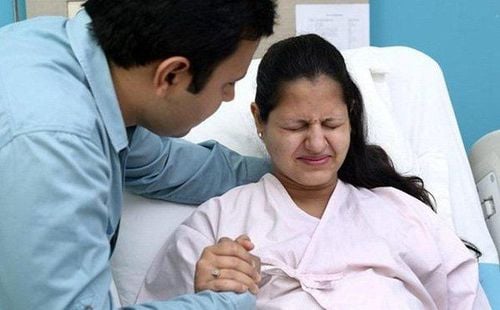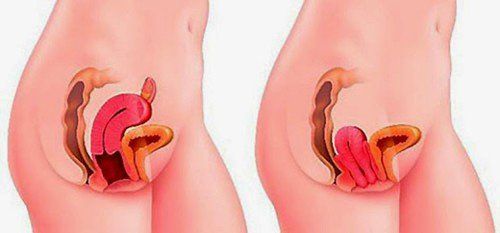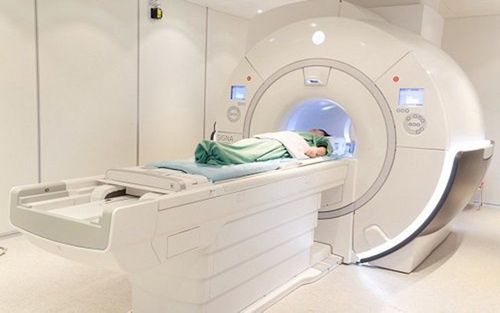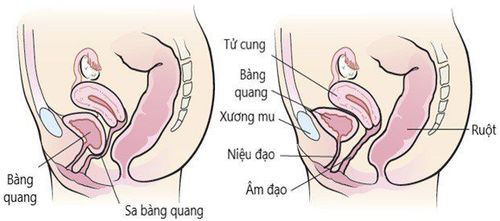This is an automatically translated article.
The article was written by Senior Doctor Nguyen Thi Tan Sinh - Deputy Director of Women's Health Center - Women's Health Center - Vinmec Times City International General Hospital.
Pelvic organ prolapse is a disease that often occurs in women after menopause, pregnancy, multiple births, pelvic surgery, chronic constipation and respiratory disease. The disease not only causes the patient to suffer physical damage, but also has serious psychological effects.
1. What is pelvic organ prolapse?
Pelvic organ prolapse is the prolapse of one or more pelvic organs from the normal anatomical position through the vagina or anus such as: Prolapse of the bladder, uterus, vagina, rectum, intestines and related tissues caused by damage and weakening of the fascia and ligamentous structures that support the pelvic floor, causing symptoms of urinary and bowel disorders
Pelvic organs including the vagina, uterus, bladder, and urinary tract vagina and rectum. These body parts are held in place by the fascia, ligaments, and connective tissues of the pelvic floor.
2. What is the cause of pelvic organ prolapse?
The main cause of pelvic organ prolapse is pregnancy, multiple births, menopause, and aging.

In addition, there are other causes of pelvic organ prolapse, such as: Being overweight or obese, constipation and having to strain to have a bowel movement, chronic cough caused by smoking, asthma that puts pressure on the abdomen can be causing pelvic organ prolapse. Pelvic organ prolapse can occur at any age, but most symptoms in women become worse after menopause.
3. Symptoms of pelvic organ prolapse?
Symptoms appear gradually and may initially go unrecognized. In mild cases of pelvic organ prolapse, the patient can sometimes feel a bulge inside the vagina.
In severe cases of pelvic organ prolapse, organs may push out of the vaginal opening. Symptoms may be as follows:
Feeling of heaviness or tightness in the vagina; Organs protruding from the vagina Leaking urine (incontinence) Difficulty emptying urine in the bladder Difficulty defecating
4. Types of pelvic organ prolapse
There are many types of pelvic organ prolapse and have different names depending on the part that is prolapsed: Prolapse of the bladder, small intestine, rectum, uterus, vaginal vault.
The pictures below illustrate uterine prolapse (Figure 1), bladder, rectum and uterus prolapse (Figure 2)


5. How is pelvic organ prolapse diagnosed?
The specialist will ask for signs, examine the vagina or rectum to determine which organ prolapse, alone or in combination (eg, uterine prolapse with bladder or rectal prolapse, uterine prolapse with fissures). urine).
6. Treatment of pelvic organ prolapse?
Many women do not need immediate treatment if the prolapse is mild. Diet and lifestyle changes may be needed to relieve some symptoms. If you are overweight or obese, losing weight will improve your overall health and possibly symptoms of organ prolapse.
6.1 Pelvic floor muscle rehabilitation exercise Pelvic floor muscle rehabilitation exercise to make the muscles stronger and prevent more prolapse. Pelvic floor exercises, also known as Kegels, aim to strengthen the muscles around the opening of the urethra, vagina, and rectum. Doing these exercises regularly can improve urinary incontinence and slow down the progression of organ prolapse. Your therapist and physical therapist will help you do the right exercises.

6.2 Surgical treatment If symptoms become bothersome, surgical treatment is needed. There are two main types of surgery: pelvic floor surgery and surgery to narrow or close the vagina.
Pelvic floor surgery brings the organs back to their original position. Shrink surgery creates support for the prolapsed organ, helping the vagina to be tighter, often applied to small prolapse cases. Vaginal surgery or closure is only for people who are older, have other serious illnesses, and don't want to have sex anymore.
Vinmec International General Hospital is one of the leading international hospitals in the field of diagnosis and treatment of many urolithiasis (extra-body lithotripsy, retrograde endoscopic lithotripsy, percutaneous kidney stone removal. , laparoscopic stone removal surgery ...). Along with a team of leading medical doctors, a system of modern technological equipment; outstanding with comprehensive and professional medical examination, consultation and treatment services; A civilized, polite, safe and sterile medical examination and treatment space helps the recovery process to be highly effective.
Please dial HOTLINE for more information or register for an appointment HERE. Download MyVinmec app to make appointments faster and to manage your bookings easily.
MORE
Pelvic problems after the age of 40 "Stop" with genital - bladder prolapse thanks to the world's most modern laparoscopic techniques Signs of pelvic floor dysfunction














